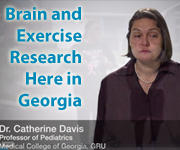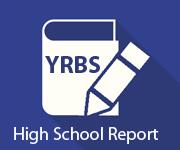Georgia State University – Georgia Health Policy Center
The Georgia Health Policy Center (GHPC), housed within Georgia State University’s Andrew Young School of Policy Studies, provides evidence-based research, program development, and policy guidance at the local, state and national levels to improve community health.
The GHPC focuses on finding solutions to the most complex issues facing health and health care including insurance coverage, behavioral health, long-term care, health care reform, children’s health and the development of rural and urban health systems.
As part of the center’s work, faculty and staff are dedicated to understanding evidence-based approaches to obesity prevention and control. Since 2012, the GHPC has been a proud partner of Georgia Shape and its stakeholders to impact the health of Georgia's children.
During this time, the GHPC has provided technical assistance to 64 Georgia Shape school grantees in 34 Georgia counties as they plan and implement programs and policies to improve the health, nutrition and fitness of their students.
GHPC staff Debra Kibbe and Rachel Campos lead this initiative, which provides training, peer education, and technical assistance to elementary, middle and high schools. Technical assistance includes helping schools assess student and staff health; examining school wellness policies; creating sustainable physical activity and nutrition initiatives; and implementing strategic wellness efforts to improve school health policies and systems.
GHPC also provides the tools, knowledge and contacts necessary to help the schools access additional resources and sustain their plans after the grant period has ended. During the 2014-2015 school year, more than 19,300 students were impacted by projects initiated under Georgia Shape grants.
Kibbe says that the following insights gained from previous grantees can benefit all schools undertaking new wellness-based initiatives:
- A team approach to school wellness is more effective than an individual or small group single-handedly leading the effort.
- Divide responsibilities and tasks for planning and implementing school health priorities among the team. A collective effort makes achieving the school council's health goals more manageable rather than having the brunt of the work fall upon a single champion.
- Embrace staff and student input when setting priorities and the short-term objectives. Greater staff and student support makes achieving the goals more attainable.
- Be sure to communicate program success through local news, social media and other school communication outlets.
For more information about the GHPC, visit www.ghpc.gsu.edu.



